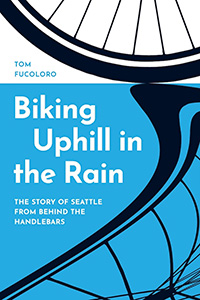 While the state’s Highway 99 tunnel project’s recent serious and scary mishaps show a massive transportation investment gone awry, it’s important to highlight the absolutely incredible work Seattle is doing to increase safety near the city’s schools.
While the state’s Highway 99 tunnel project’s recent serious and scary mishaps show a massive transportation investment gone awry, it’s important to highlight the absolutely incredible work Seattle is doing to increase safety near the city’s schools.
Using a relatively small budget, the city’s Safe Routes to School program is getting big results. This program shows government transportation work at its very best, saving kids from traffic collisions and making neighborhoods better for everyone.
And now you can help them identify even more locations near Seattle schools (public or private). The city launched a wikimap to crowdsource traffic danger spots near schools. And this isn’t some toothless exercise: The city will pick 12 locations from this map and build them within the next couple years.
We want to know where people are speeding, where people fail to stop for pedestrians or where crossing and/or sidewalk improvements are needed. And we’ve developed an online tool to help collect this information. The feedback you provide will be used to prioritize future infrastructure investments, enforcement activities, and educational outreach. In fact, SDOT will develop conceptual designs for 12 locations selected through this exercise and we will build each of these improvements over the next few years.












Comments
3 responses to “Help city ID dangerous spots using their new Safe Routes to School wikimap”
I started, but then I realized I would basically have to mark almost every single street and intersection in my entire neighborhood as hazardous.
And if they’re only fixing a dozen in the entire city, that’s maybe a tiny fraction of a percent of all the bad intersections and streets. So I stopped after a dozen or two.
There are other sources of data and I hope they are using them in conjunction with their own, because otherwise they’ll just be getting a limited source of information and won’t be able to make the best decisions.
For example:
http://seattletimes.com/flatpages/local/pedestrianandbicyclecollisionsinseattle.html
(which also claims to be based on SDOT data…)
http://www.nytimes.com/newsgraphics/2013/06/07/bicycle-routes/index.html#city=seattle
https://www.bikewise.org/
[…] Transportation initiated a study on the use of crowdsourcing as a data collection method. Seattle requested residents to help them identify unsafe spots near school. Washington DC has a map as part of their Vision Zero initiative. […]